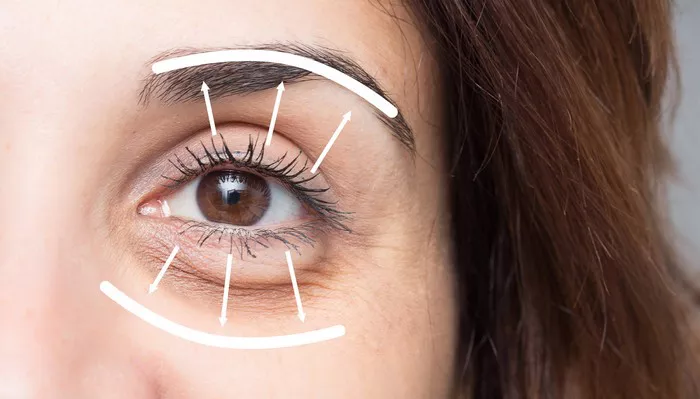Eyelid surgery, medically known as blepharoplasty, is a cosmetic procedure designed to enhance the appearance of the eyes by addressing issues such as sagging skin, wrinkles, and puffiness. As individuals consider the transformative potential of eyelid surgery, a critical aspect to understand is the recovery process. This comprehensive article aims to delve into the intricacies of the healing journey after eyelid surgery, providing insights into the duration and stages of recovery associated with this popular cosmetic intervention.
An Overview of Eyelid Surgery
Defining Blepharoplasty
Eyelid surgery, or blepharoplasty, is a surgical procedure that can be performed on the upper eyelids, lower eyelids, or both. The surgery involves the removal of excess skin, muscle, and fat to rejuvenate the appearance of the eyes. Whether undertaken for cosmetic reasons or functional improvements, eyelid surgery aims to create a more youthful and rested look.
Upper and Lower Blepharoplasty
Upper blepharoplasty primarily targets the upper eyelids, addressing issues such as drooping skin and fat deposits. Lower blepharoplasty focuses on the lower eyelids, targeting puffiness and fine lines. In some cases, individuals opt for both upper and lower eyelid surgery to achieve comprehensive rejuvenation.
Immediate Postoperative Period
Swelling and Bruising
In the immediate days following eyelid surgery, patients commonly experience swelling and bruising around the eyes. These side effects are a natural response to the surgical intervention and can vary in intensity depending on the extent of the procedure. Cold compresses and keeping the head elevated can help manage swelling during this initial phase.
Monitoring Incisions
During the first week, meticulous postoperative care is crucial. Patients must keep the incision sites clean, apply prescribed ointments, and take any prescribed medications for pain management. Following surgeon-provided guidelines ensures optimal healing and reduces the risk of complications.
Stitches and Dressings
Follow-Up Appointments: Assessing Progress
Around the end of the first week, patients typically attend a follow-up appointment with their surgeon. During this visit, stitches may be removed, and any necessary adjustments to dressings or bandages are made. The surgeon evaluates the initial results of the eyelid surgery and provides guidance on the next steps in the recovery process.
Gradual Return to Normal Activities
As the second week unfolds, many patients find themselves more comfortable resuming light daily activities. However, strenuous exercises and activities should still be avoided. The extent of physical activity allowed during this phase depends on the surgeon’s recommendations and the individual’s healing progress.
Subtle Changes and Continued Healing
Reduction in Swelling
Beyond the initial month, patients often notice a reduction in swelling and bruising. This marks a positive sign in the healing process. While the initial results of eyelid surgery become apparent during this period, it is crucial to understand that the full outcome may take several weeks to fully manifest as residual swelling continues to diminish.
Long-Term Results
The long-term healing process extends over several months. By the end of the third month, patients often experience a significant reduction in swelling and a more refined outcome. The final results of eyelid surgery become increasingly evident, and any residual signs of surgery, such as minimal scarring, continue to fade. This phase marks the culmination of the transformative journey initiated by eyelid surgery.
Postoperative Care
Adhering to Instructions: Key to Successful Recovery
Optimal healing after eyelid surgery hinges on the patient’s commitment to postoperative care instructions. This includes attending follow-up appointments, avoiding sun exposure, and maintaining a healthy lifestyle. Proper skincare and protection from the elements are essential to safeguard the delicate healing tissues and promote a smooth recovery.
Potential Complications
Rare but Possible Risks
While eyelid surgery is considered a safe and low-risk procedure when performed by a skilled and experienced surgeon, it is essential for patients to be aware of potential complications. These may include infection, hematoma, or unfavorable scarring. Any unusual symptoms, such as persistent pain, fever, or changes in skin color, should be promptly reported to the surgeon for evaluation.
Individual Variations in Healing
Age, Health, and Lifestyle Influence Recovery
The duration of recovery after eyelid surgery can vary among individuals due to factors such as age, overall health, and lifestyle. Younger individuals and those in good overall health may experience a faster recovery compared to older individuals or those with underlying health conditions. Following a healthy lifestyle, including proper nutrition and hydration, can positively impact the healing process.
Conclusion
In conclusion, eyelid surgery offers a transformative solution for individuals seeking to enhance the appearance of their eyes. Understanding the various stages of recovery, from the immediate postoperative period to the long-term refinement of results, is crucial for those considering or undergoing this cosmetic procedure. By actively participating in postoperative care, being aware of potential complications, and maintaining realistic expectations, patients can embrace the journey towards a refreshed and rejuvenated gaze.

